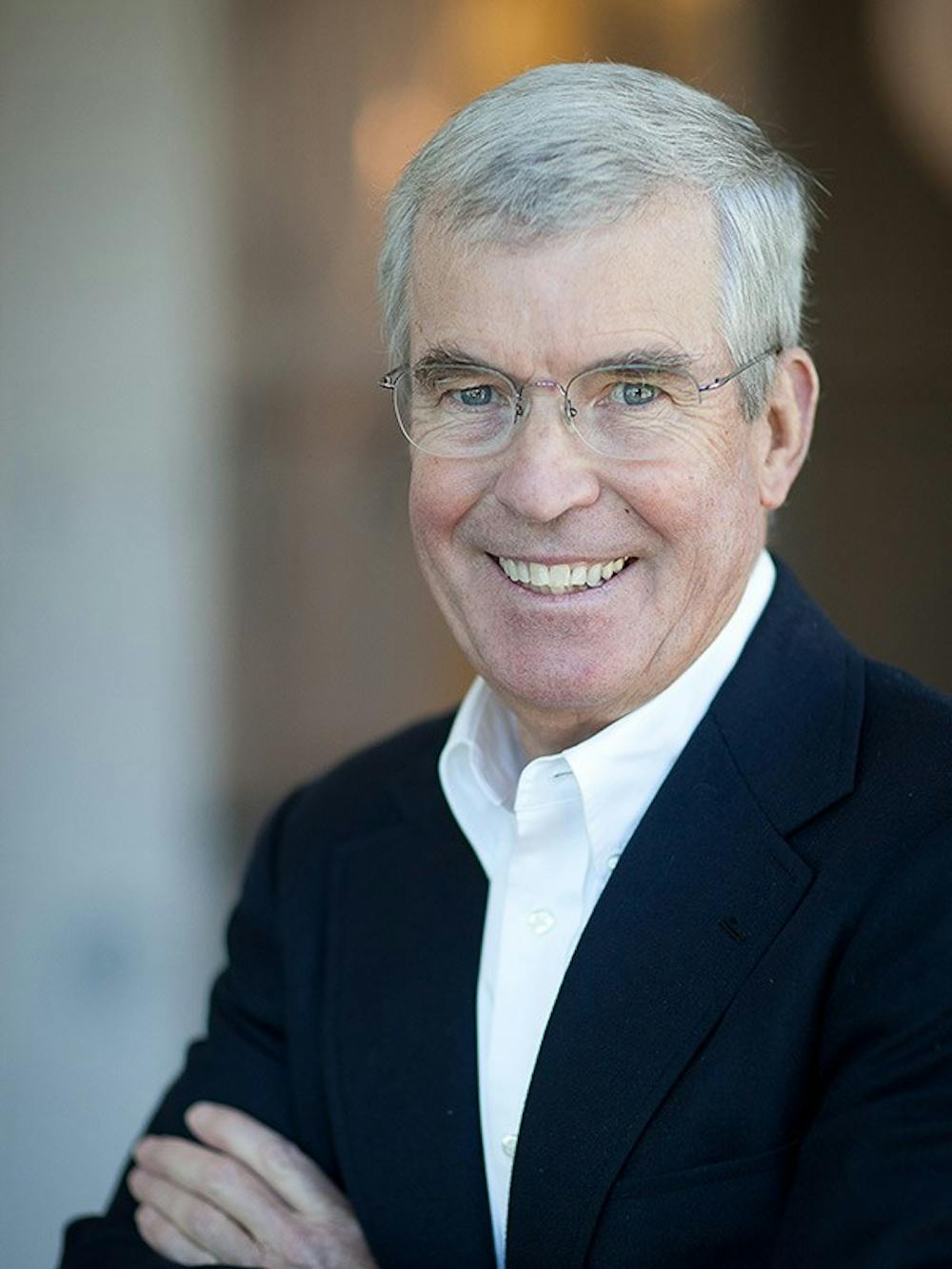The Board of Visitors began their June meeting Thursday in which they elected James B. Murray Jr. as the new vice rector. The Academic and Student Life Committee also established pan-University institutes, a new professorship and a new degree program during its meeting, while the Audit, Compliance and Risk Committee passed its audit plan for the 2018-19 fiscal year.
Murray’s election follows current Vice Rector Frank M. Conner III’s ascension to the rector role as Rector William H. Goodwin Jr. leaves the Board. He will serve as the vice rector for two years before becoming the rector for two years.
“In my conversations with Jim Murray, he’s incredible — he’s a huge champion of students,” said Bryanna Miller, a fourth-year College student and the new student member of the Board of Visitors. “The fact that he’s alumni gives him perspective because he can compare from his own experience to now, and he’s been really open to understanding the contemporary student experience.”
During the Academic and Student Life Committee meeting, the Board established the Carl Lynch III Professorship in Anesthesiology in the School of Medicine. University President Teresa Sullivan also announced a new degree program for a master’s of science in athletic training through the Curry School of Education.
“Athletic training is an area in which a lot of people have interest, and up to now, a lot of people in athletic training have not really had any particular form of credentials,” Sullivan said prior to the meeting. “This would give a student the leg-up of having a formal credential, and there actually is quite a lot to learn about that to do a good job of it.”
Tom Katsouleas, the executive vice President and provost, presented to the committee on the establishment of two pan-University institutes — the Environmental Resilience Institute and the Global Infectious Diseases Institute.
“This is an exciting opportunity to bring together our strengths with environmental science with policy and engineering,” he said of the Environmental Resilience Institute. “Both of these pan-University institutes really have the potential to take us from prominence to preeminence.”
Kerry Abrams, the vice provost for faculty affairs, presented to the Board results from the Collaborative on Academic Careers in Higher Education survey illustrating faculty satisfaction. Compared to five peer institutions — the University of North Carolina-Chapel Hill, University of Minnesota-Twin Peaks, Vanderbilt University, Indiana University-Bloomington and Virginia Tech — the University was unique in the ranking the quality of undergraduate and graduate students as two of the four best aspects of working at the University by faculty.
According to Abrams, Politics Prof. David Leblang, who presented his research he performed with undergraduate students to the Board in a prior meeting, demonstrates the norm of student-faculty collaboration at the University.
“The work [Leblang is] doing with undergraduates is typical of what faculty here do and not typical of what faculty do at other large universities,” Abrams said. “It’s not that the undergraduates at those schools aren’t of high quality, but it may be that the faculty never met them.”
Abrams also said the University’s results were also notable in that the faculty ranked diversity of faculty as one of the top four worst aspects of working at the University. Compensation, the worst aspect according to faculty, also went down to 18 percent of faculty ranking it as the worst, compared to 43 percent in the 2013 survey.
The aspect of diversity, however, can be attributed to the new hires giving greater consideration towards a diverse faculty, according to Abrams.
“We now have a new generation of faculty who we’ve hired who care a lot about diversity,” Abrams said. “It’s a shift in who our faculty are and what they care about.”
The committee also passed a resolution recognizing and thanking outgoing men’s tennis coach Brian Boland for his service to the University. Boland will serve as the U.S. Tennis Association Player Development Head of Men’s Tennis after leaving the University.
“I’m so honored and humbled to have had the opportunity to have been a coach here for the past 16 years,” Boland said at the meeting.
The Audit, Compliance and Risk Committee also met Thursday to approve the audit plan for the 2018-19 fiscal year. The approved plan followed the University three “lines of business” — education, research and clinical care.
“This is a major shift to a risk-based approach for planning audit,” Committee Chair Frank E. Genovese said. “This is well thought out, and we’re really moving well ahead of other universities in this area.”







